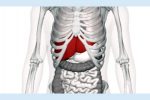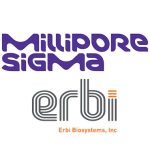Driven largely by hepatitis in its various forms, liver disease has long been a fixture of life in China and Southeast Asia. Over the past three decades, public health programs in the region have slashed the rates of the viral liver infection. But despite that progress, significant increases in obesity and diabetes have also caused the incidence of liver diseases to skyrocket across the region. This alarming growth in diseases of the liver is spurring a need for more diagnostic tests and treatments—creating significant opportunities for Western medical device and pharmaceutical firms.
Causes of Liver Disease and Prevention Efforts in Asia
Poor diet, consumption of high-fat foods and excessive alcohol consumption have long been major generators of liver disease in industrialized Western countries. Nowadays, these incidences are also growing rapidly in Asia.
Traditionally, the biggest causes of liver cancer and other liver diseases in Asia have more often been caused by chronic infection with the hepatitis B virus (HBV) or hepatitis C virus (HCV). According to the World Health Organization, some 350 million people worldwide are living infected by HBV, and 75% live in the Asia Pacific region. In China alone, an estimated 90 million people, or 7% of its population, are infected by some chronic form of the virus. What’s more, three out of 10 people who become chronically infected are at risk of developing fatal illnesses such as liver cirrhosis and later liver cancer.
Still, progress in reducing HBV incidence in China has been made. China’s childhood HBV vaccination program has achieved a coverage rate of 90%, which means most children are now protected. And across the Asian region, most governments have at last instituted consistent hepatitis immunization programs.
In addition, Asian nations have made significant progress in combating another traditional cause of liver cancer: Aflatoxins. Produced by molds that grow on poorly stored crops, particularly corn and peanuts, aflatoxins are poisonous carcinogens that can end up in foods made of these products. In the United States, food safety regulations limit aflatoxin contamination, but until recently, exposure to the toxins has been high in the Asia Pacific region, especially in southern China. Over the past decade, improvements in agricultural policies and economic development have brought down aflatoxin exposure in the region.
But despite the progress made to prevent hepatitis infection and exposure to aflatoxins and other carcinogens, the scourge of liver disease has not abated. Across Southeast Asia, diabetes and obesity are more often than not precursors to chronic liver disease, and are emerging as major public health problems.
A 2016 study published in the Journal of Hepatology found that a staggering 30% of the population of Southeast Asia has nonalcoholic fatty liver disease (NAFLD), a condition where fat makes up more than 5% of the liver. The advanced form of this disease, nonalcoholic steatohepatitis (NASH), causes extensive scarring and inflammation of the liver, which can be fatal. It also increases the patient’s chances of acquiring liver cancer or heart disease.
With diabetes on the rise in the region, clinicians and researchers say it is only a matter of time before the number of NAFLD and NASH cases soars. Out of the 410 million people worldwide who have been diagnosed with diabetes as of 2014, more than 60% of the cases were from Asia, according to the International Diabetes Federation (IDF).
Solutions on the Way: Medtech Developments that Combat Liver Disease
In response to the increasing prevalence of liver disease, the market for medical devices that treat liver disorders is seeing growth in Asia. In November 2017, Johnson & Johnson broke ground on a new factory in China’s Jiangsu province to manufacture triclosan-coated sutures, endoscopic staplers, and linear cutters. These products, designed to reduce infections associated with abdominal surgery, are used to treat lung, liver and gastric cancer.
Device firms are also making inroads in Asia with the production of diagnostic instruments. In January, Histoindex Pte, Ltd., a Singapore-based medical technology company, announced approval for a new digital pathology imaging system to aid in the clinical diagnosis of NASH and other chronic liver diseases. The product, called Genesis, is the world’s first imaging system that has the capability to go beyond the basic histological assessment. In 2017, Frost and Sullivan awarded Histoindex with the 2017 Asia-Pacific Nonalcoholic Steatohepatitis Diagnostics New Product Innovation Award for its contributions to the development of NASH treatments.
Delcath Systems, a U.S. interventional oncology company located in New York, focuses on oncology. Its proprietary product—Melphalan Hydrochloride for Injection for use with the Delcath Hepatic Delivery System (Melphalan/HDS)—administers high-dose chemotherapy to the liver. Their technology concentrates on the treatment of primary and metastatic liver cancers. The company has clinical development projects ongoing in the United States, Europe and Asia—starting with Singapore.
In addition, a Chinese company called Hisky Med, based in Jiangsu province, has developed a device that can quickly detect liver disease at its early stages. The device, FibroTouch, is the world’s first image-guided non-invasive liver fibrosis diagnostic system. It can complete a liver examination in two minutes and give immediate quantitative results of liver fibrosis fat levels. The device is low cost and easy to operate, making it an alternative to traditional biopsies and other invasive methods used to detect liver fibrosis. The device is being used in about 400 hospitals and medical institutions in China.
No medicines have yet been approved to treat NAFLD and NASH, but pharmaceutical firms have been testing new treatments for those diseases and for liver cancer. Among treatments in the works are engineered liver tissue, designed to regenerate in a way that mimics the human liver; artificial bile ducts; and a panoply of pharmaceuticals to aid in liver transplants. According to Allied Market Research, the global liver disease treatment market is projected to grow at a compound annual growth rate (CAGR) of more than 11% over the next three years, reaching $19 billion by 2022. In the Asia Pacific market, the growth projection is even higher. The market researchers project a 12.51% CAGR in the region, due to the increasing prevalence of liver diseases and increasing research and development investments in this region.
With incidences of liver diseases remaining high in Asia due to viral infections such as hepatitis, antiviral drug sales still hold the major share of the total Asian market for liver disease treatment and is expected to maintain that lead through 2021. However, more medical devices are needed in the region to further combat this disease.







